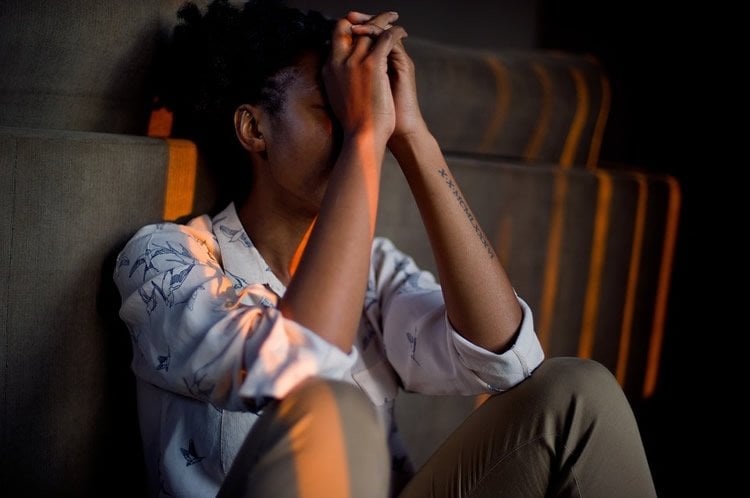Summary: Study revels a stepped care model can be a useful and time saving method to help treat anxiety in young people.
Source:Elsevier.
A stepped care model of treatment for youth with anxiety can be effectively delivered using at least 14% less therapist time than traditional treatment service, reports a study published in the October 2017 issue of the Journal of the American Academy of Child and Adolescent Psychiatry (JAACAP).
In today’s stretched economy, finding cheaper and more efficient ways to spend our public health dollars is critical. Mental health professionals can now treat young people with anxiety disorders effectively. But professional treatment comes at a cost. Standard, scientifically proven treatments for youth with anxiety usually require 15 to 20 hours of input from a mental health professional. Finding ways to reduce this time but still maintain good outcomes is the next research frontier.
This study is the first to test a “stepped care” model of treatment delivery for children and adolescents with anxiety. While the idea of stepped care is not new, it has not been well tested and is yet to find its way routinely into mental health services. In traditional care, a child with anxiety is seen by a therapist on a regular basis over 10-20 weeks. In stepped care, the young person first begins using self-help to manage their own symptoms. Only when this doesn’t work do they “step up” to treatment with a therapist. Higher intensity steps can be added if needed.
In this study, 281 young people with clinical anxiety disorders, aged between 6 and 17 years, were treated in either a traditional or stepped care model. Stepped care was delivered over three steps. Following the first step (self-help), 40% of young people improved and did not need any further treatment, pointing to a massive saving. One year after coming to therapy, almost 70% of young people in both groups were completely free of their presenting anxiety. But this success took 14% fewer hours from a mental health professional by using stepped care. “Other models of stepped care could be even more efficient” reported Ronald Rapee, PhD, lead author of the study. “For instance, if we had stuck with only the first two steps of stepped care, we would have had very similar outcomes, but at more than 30% saving,” he explained.

The authors point out that this study tested one model of stepped care within one local system, and the results might not apply in the same way across all societies. The findings highlight the potential value of stepping care for youth with anxiety, but further work is needed to test different combinations and models of stepping. “The possibility that we can identify ways of delivering treatment to help more clinically anxious youth within our existing workforce has tremendous implications for our health system and our economy,” said Mary Lou Chatterton, PharmD, another study author.
Source: Mary Billingsley – Elsevier
Image Source: NeuroscienceNews.com image is in the public domain.
Original Research: Abstract for “Comparison of Stepped Care Delivery Against a Single, Empirically Validated Cognitive-Behavioral Therapy Program for Youth With Anxiety: A Randomized Clinical Trial” by Ronald M. Rapee, PhD, Heidi J. Lyneham, PhD, Viviana Wuthrich, PhD, Mary Lou Chatterton, PharmD, Jennifer L. Hudson, PhD, Maria Kangas, PhD, and Cathrine Mihalopoulos, PhD in Journal of the American Academy of Child and Adolescent Psychiatry. Published online August 9 2017 doi:10.1016/j.jaac.2017.08.001
[cbtabs][cbtab title=”MLA”]University of Pennsylvania School of Medicine “New Model For Treating Anxiety in Youth.” NeuroscienceNews. NeuroscienceNews, 2 October 2017.
<https://neurosciencenews.com/anxiety-youth-treatment-7635/>.[/cbtab][cbtab title=”APA”]University of Pennsylvania School of Medicine (2017, October 2). New Model For Treating Anxiety in Youth. NeuroscienceNews. Retrieved October 2, 2017 from https://neurosciencenews.com/anxiety-youth-treatment-7635/[/cbtab][cbtab title=”Chicago”]University of Pennsylvania School of Medicine “New Model For Treating Anxiety in Youth.” https://neurosciencenews.com/anxiety-youth-treatment-7635/ (accessed October 2, 2017).[/cbtab][/cbtabs]
Abstract
Comparison of Stepped Care Delivery Against a Single, Empirically Validated Cognitive-Behavioral Therapy Program for Youth With Anxiety: A Randomized Clinical Trial
Objective
Stepped care is embraced as an ideal model of service delivery but is minimally evaluated. The aim of this study was to evaluate the efficacy of cognitive-behavioral therapy (CBT) for child anxiety delivered via a stepped-care framework compared against a single, empirically validated program.
Method
A total of 281 youth with anxiety disorders (6−17 years of age) were randomly allocated to receive either empirically validated treatment or stepped care involving the following: (1) low intensity; (2) standard CBT; and (3) individually tailored treatment. Therapist qualifications increased at each step.
Results
Interventions did not differ significantly on any outcome measures. Total therapist time per child was significantly shorter to deliver stepped care (774 minutes) compared with best practice (897 minutes). Within stepped care, the first 2 steps returned the strongest treatment gains.
Conclusion
Stepped care and a single empirically validated program for youth with anxiety produced similar efficacy, but stepped care required slightly less therapist time. Restricting stepped care to only steps 1 and 2 would have led to considerable time saving with modest loss in efficacy.
“Comparison of Stepped Care Delivery Against a Single, Empirically Validated Cognitive-Behavioral Therapy Program for Youth With Anxiety: A Randomized Clinical Trial” by Ronald M. Rapee, PhD, Heidi J. Lyneham, PhD, Viviana Wuthrich, PhD, Mary Lou Chatterton, PharmD, Jennifer L. Hudson, PhD, Maria Kangas, PhD, and Cathrine Mihalopoulos, PhD in Journal of the American Academy of Child and Adolescent Psychiatry. Published online August 9 2017 doi:10.1016/j.jaac.2017.08.001







